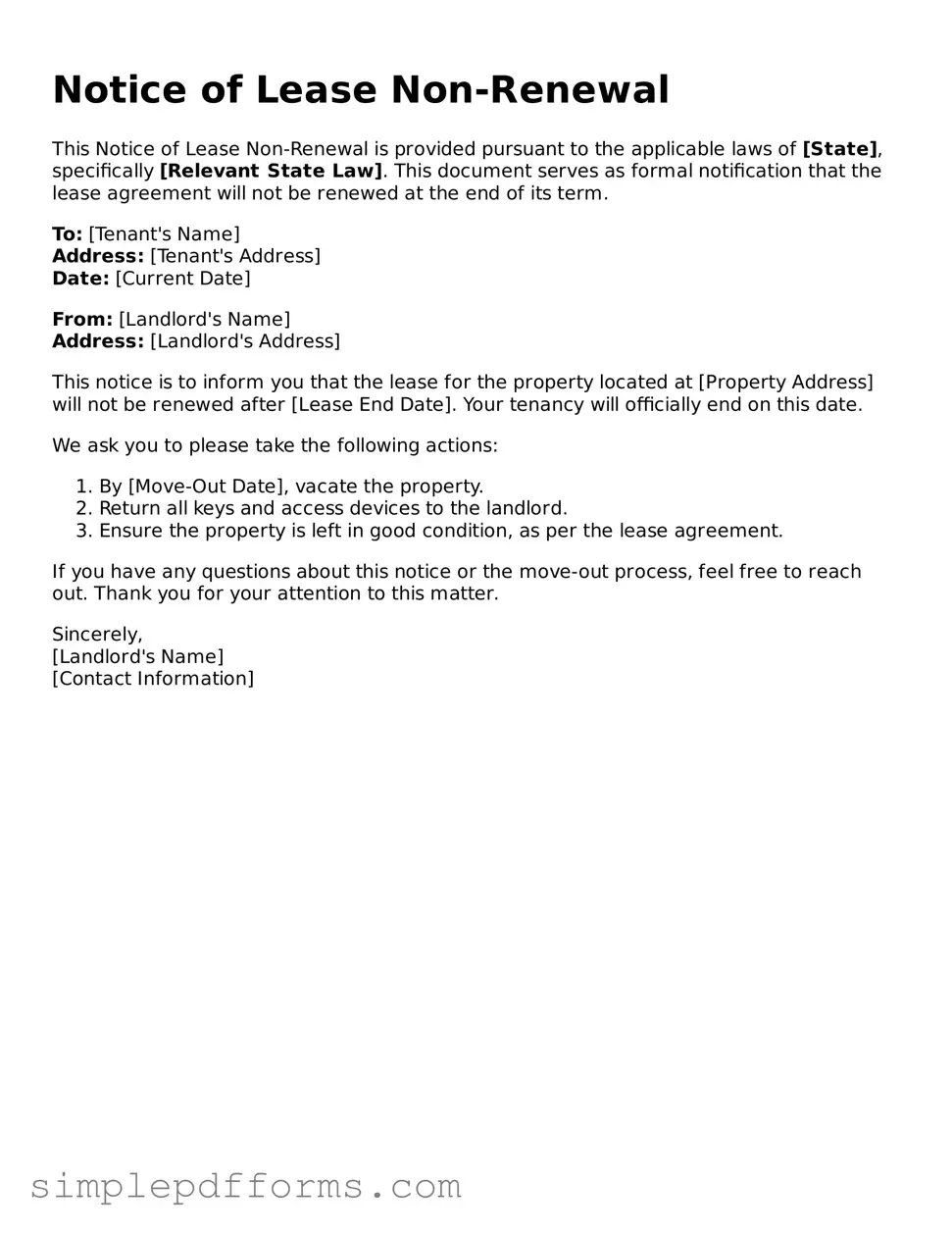Free Notice of Lease Non-Renewal Form
The Notice of Lease Non-Renewal form is a legal document used by landlords or tenants to formally communicate the decision not to renew a lease agreement once its term expires. This notice serves to inform the other party of their intentions, allowing for appropriate planning and arrangements. Understanding this form is crucial for both parties to ensure compliance with lease terms and local laws.
Open Notice of Lease Non-Renewal Editor Now
